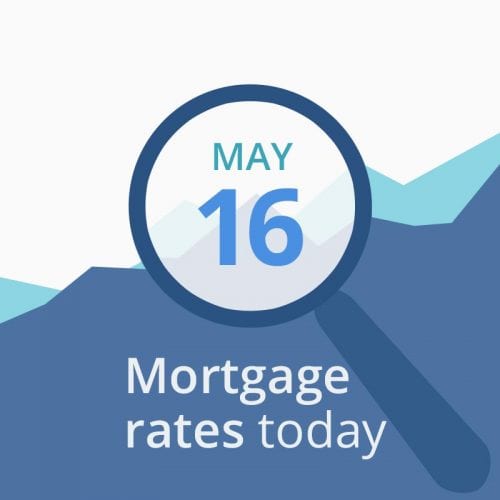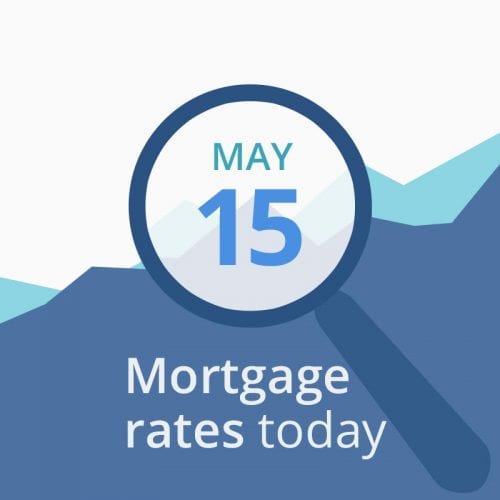
In this article:
There are many reasons that a refinance can help you improve your finances, both immediately and in the long-term. One reason is to improve your cash flow in the here and now.
- You can lower your interest rate by choosing a program at a better rate than you currently have. That may be an ARM with a lower rate which is fixed for one-to-ten years
- You can lower your payment by stretching out your current balance over a new 30-year term. It will take longer to pay off your loan, but your payment will drop
- Keep in mind that the longer you take to clear your mortgage debt, the more interest you’ll pay over the life of the loan
There is usually a trade-off between immediate savings and long-term costs. But you can always choose to accelerate your repayment as your finances improve.
Verify your new rate (May 11th, 2019)
No, you’ve not missed the boat
You may have heard that interest rates are rising, and for a time in 2018, they were.
Then something funny happened. Rates dropped through the floor.
According to Freddie Mac, the average 30-year fixed rate in the U.S. fell from near 5.0 percent in November 2018 all the way down to 4.06 percent by March 2019.
That’s a serious drop.
Related: What mortgage rate history can tell us about the future
Yes, today’s mortgage rates are higher than the all-time record low (3.45 percent) seen in April 2013. But few homeowners were lucky enough to actually get that rate. And rates aren’t all that much higher now.
Read on to discover mortgage rates that are today even lower than the average one in December 2016.
Verify your new rate (May 11th, 2019)
Think you don’t qualify? You may be wrong
There are two main reasons a homeowner may think she doesn’t qualify for a refinance for lower payments:
- Her home is “underwater” — meaning her mortgage balance is higher than the current market value of the property that secures it
- Her credit score is shot
For a cash-out refinance (one where you walk away with a fat check), either of those will likely disqualify you. But there are programs that exist to help homeowners refinance to a lower rate when they’re in either or both of those situations.
Related: New underwater refinance program available January 2019
For example, mortgages backed by the Federal Housing Administration, Veterans Administration and U.S. Department of Agriculture (FHA loans, VA loans and USDA loans) all have streamline refinancing programs that don’t require credit checks or home appraisals. And there’s more help on the way for others …
Should you refinance for lower payments?
If you refinance to a lower rate, you’ll usually end up with a smaller payment. There are exceptions, but in most cases that’s true.
In fact, you can usually refinance for lower payments even if you get a higher rate. That’s because you’ll reset the clock on your mortgage.
Related: refinance without restarting the clock on your current mortgage
Take this example. Suppose that you’ve been making payments on your 30-year FRM for 10 years. If you refinance to a new 30-year FRM, you’ll be spreading your original repayment over 40 years (10 already and 30 more to come) instead of 30 years. And the more payments you make to clear a particular debt, the smaller each needs to be.
Downside
But this comes with a huge disadvantage. Even if you manage to refinance to a lower rate, you’ll end up paying significantly more interest in the end. Because borrowing a large sum over 40 years costs more than over 30 years, regardless of moderate variations in rates.
Related: When to refinance: I need to lower my mortgage rate or payment
Of course, this may not bother you. We all have priorities that change over our lifetimes, and you may legitimately choose to accept a higher total cost of borrowing in exchange for smaller monthly installments now. You just need to be aware you’re making that choice when you refinance for lower payments.
Refinance to cut your interest rate and borrowing costs
There’s a great way to get a lower rate and slash your total cost of borrowing. But it’s the opposite of a refinance for lower payments. Because you’re actually refinancing for higher payments.
If you cut the time your mortgage has left to run, you get two advantages:
- The shorter term will typically earn you a significantly lower mortgage rate than you could get on a 30-year mortgage
- You’ll pay a whole lot less for your loan overall, simply because you’re borrowing for a shorter period
You’re still resetting your mortgage clock. But you’re doing so for a shorter period than the term left to run on your existing mortgage. And fewer payments mean bigger payments.
Related: Can 15 year mortgage payments make you rich?
Most people with this goal refinance their 30-year FRMs to 15-year ones. But, if you can afford it, some lenders offer even shorter terms: five to ten years. Do this only if the interest rates are lower than the 15-year loan. Otherwise, get a 15-year loan and make extra principal reduction payments when you are feeling flush. This is less risky and costs no more.
Or refinance to cut your rate and payments
So-called experts have been predicting sharp increases in mortgage rates for roughly a decade. Yet those rises either didn’t materialize at all or turned out to be much gentler than expected.
If in the past, those predictions put you off taking on an adjustable-rate mortgage (ARM), you might feel as though you made the wrong choice. Because, at least for their initial, fixed-rate period, ARMs come with considerably lower rates than equivalent FRMs. And many with ARMs actually saw their rates go down when the economy softened.
Related: 3 questions to ask when considering an ARM loan
Here’s how ARMs work. You get an introductory period in which the interest rate should be lower than that of a 30-year fixed-rate loan. This period can range from three to ten years, with the most common loan being a 5/1 ARM, fixed for five years.
After that initial period ends, ARM rates change with economic conditions, and your rate can reset once or twice a year, depending on the terms of your mortgage. But ARM rates overall have only edged up slightly over the last 10 years, and homeowners with ARMs are currently sitting pretty.
Given that most Americans move more frequently than once every 10 years, many homeowners would be considerably better off with one of these.
Minimizing ARM risks
Better yet, today’s ARMs come with less risk than they once did. Prepayment penalties are rare. And ARMs have caps on how much an interest rate can change at any one adjustment, and how high the rate can go over the lifetime of the loan.
Related: ARM mortgages in 2018: no longer the wallflowers
Lenders calculate ARM rates by adding a margin (which covers their costs and their profit) to a published financial index, like the LIBOR or the CMT. Look up your index, and see where your loan would be if the introductory period ended today. (The index plus margin is also called your “fully-indexed rate.”)
For instance, if you had a loan with a margin of 2.5 percent, and it was based on the 1-year LIBOR index, it would be 5.35 percent (2.85 percent LIBOR plus your 2.5 percent margin as of this writing.)
If you were also offered an ARM based on the 1-year CMT index with a 2.75 percent margin, your fully-indexed rate would be 5.2 percent (2.45 percent plus 2.75 percent).
As long as you dump your loan before the introductory period ends, it doesn’t matter what the index and margin are. But it makes sense to know what could happen if you decide to keep your loan longer.
Verify your new rate (May 11th, 2019)
Mortgage Rates, Mortgage News and Strategy : The Mortgage Reports





